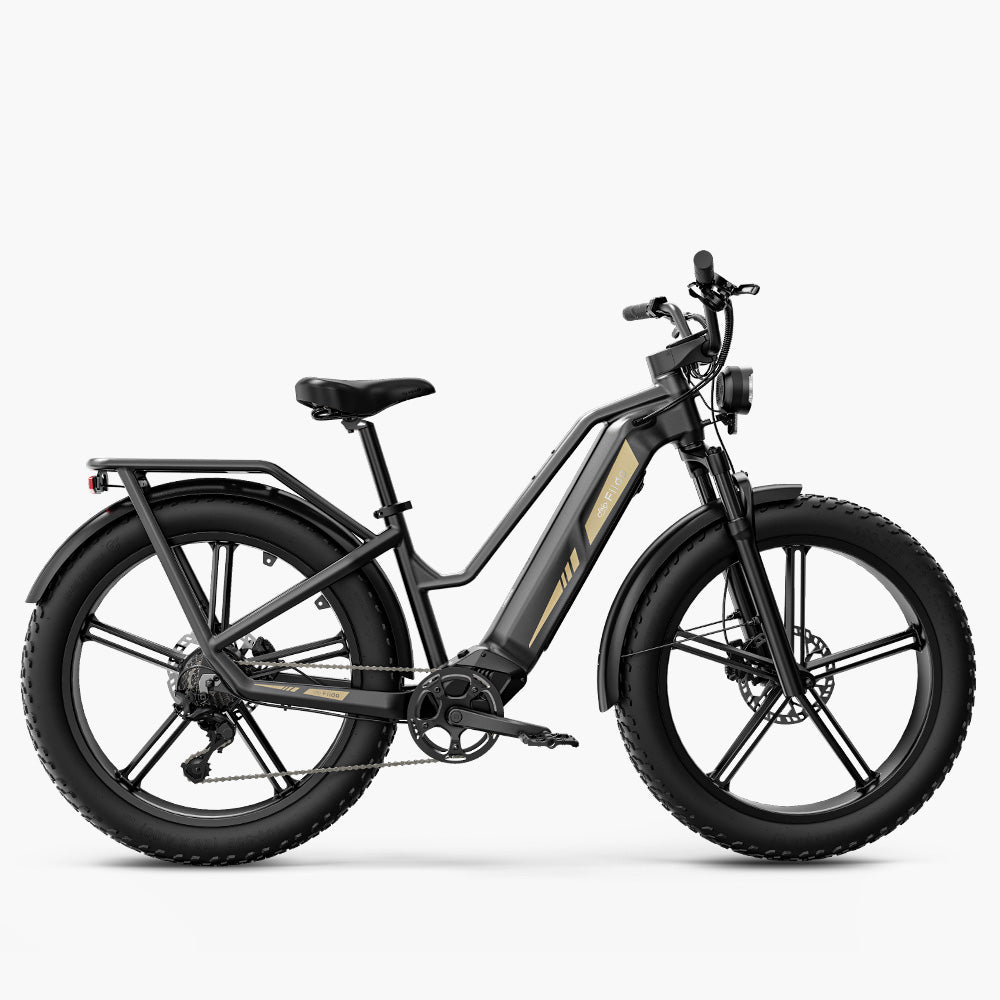Americans are rapidly adopting electric bikes as their favourite way to commute. They are convenient, eco-friendly, fun to ride, and more cost-effective than driving a car to work every day. Electric bikes are also ideal for exercising and having fun. But are electric bikes allowed on bike lanes?

In this article, we will go into detail about riding your electric bike on bike lanes in the USA.
Definition and Classification of Electric Bikes
Electric bikes have a motor mounted in one of the wheel hubs (hub-mounted) or between the cranks (mid-mounted) to assist with pedalling. There are different classifications of electric bikes depending on their power, speed, and operation:
Pedelec: These electric bikes help you ride only when you're pedaling. The motor kicks in as you pedal up to 20 mph. Then, the motor cuts out, allowing you to ride under your own power or freewheel. Pedelec bikes are great for people who need a bit of help with uphill riding and long distances but still want a workout. These are also referred to as Class 1 electric bikes.
S-Pedelec: S-Pedelec electric bikes work the same way as pedelec bikes, but their assisted top speed is 28 mph. These are for more serious cyclists and commuters who want to travel further and faster. S-Pedelec electric bikes are also known as Class 3 e-bikes.
Throttle-Assist: Throttle-Assist bikes are classified as Class 2 and can be ridden without pedaling. The rider controls the electric motor with a throttle on the handlebars, similar to riding a scooter. Throttle-assist electric bikes are ideal for easy commuting, injury rehabilitation, and people with mobility issues. You can also buy pedelec bikes with a throttle mode, giving you the best of both worlds.
The legal distinctions between these types can impact where you can ride them. Generally, pedelecs are treated more like regular bicycles, while S-pedelecs and throttle-assist bikes face stricter regulations. This classification ensures faster electric bikes are kept off pedestrian-heavy paths for safety reasons.

Legal Framework for Electric Bikes
The legal framework for electric bike usage in the USA is made up of a mixture of state and federal regulations. On the federal level, electric bikes are defined as bicycles with a motor with less than 750W that assists up to 20 mph. However, states have their own rules, which can vary widely.
For example, some states use a class system where electric bikes are based on their speed and whether they have a throttle. These classes determine where you can ride electric bikes and if they require a license. Understanding these distinctions is crucial for legally riding an electric bike.
E-Bike Policies on Bike Lanes
Policies on electric bike use in bike lanes vary by state and even by city. Here's a look at several key states to give you an idea of what to expect:
California: You can ride Class 1 and Class 2 e-bikes (up to 20 mph) on most bike paths. However, Class 3 electric bikes (up to 28 mph) are restricted to bike lanes on the road. This classification ensures faster electric bikes do not interfere with slower-moving pedestrians and cyclists on shared paths.
New York: New York City allows Class 1 electric bikes on bike lanes but restricts Class 2 and Class 3 electric bikes. But you need to know that other parts of the state have different rules, so make sure you check before heading out for a pedal. This approach aims to balance the benefits of electric bikes with the city's dense traffic and pedestrian concerns.
Colorado: Class 1 and 2 electric bikes are permitted on bike paths unless a local ordinance prohibits them. Class 3 electric bikes are generally restricted to bike lanes on the road.
The differences in policies come from safety concerns, environmental impacts, and traffic flow management. Authorities consider slower electric bikes safer and less disruptive on shared paths. Faster electric bikes are kept on the roads to prevent accidents and ensure smooth traffic flow.
Fiido Electric Bicycle Applicability Analysis
Electric bike brands do their best to comply with the variety of electric bike policies. Fiido is an excellent example of an electric bike brand with a range of products that fit into different classifications, ensuring something for everyone. Here's what to expect:
Safety Features
Fiido's electric bikes all come with features to keep their riders safe. Speed limiters and motor cut-off switches keep Fiido electric bikes in line with laws. For example, Fiido pedelec bikes stop assisting at 20mph, meaning you can ride them on most bike paths.
Design Advantages
Even though you can buy a cheap electric bikes from Fiido, they are all built with quality components. The design and build quality see Fiido electric bikes with durable frames, powerful brakes, and sturdy construction. You can choose a Fiido bike to suit the riding you like to do and your local terrain. For example, choose a fat tire electric bike for off-road riding and extra grip or a city bike for commuting.
Adaptability
Fiido electric bikes can adapt to the different policies around the country. Whether you're in California, New York, or Colorado, Fiido has a model that meets the local requirements. This adaptability makes Fiido electric bikes an excellent choice for riders who travel between different areas with varying regulations.

Fiido Titan Robust Cargo Electric Bike
248 Miles range, fat tire & 4-piston brakes, hunting e-bike&fishing e-bike.
Summary
The use of electric bikes on bike lanes varies across the USA. It is crucial to understand the local laws and classifications to ensure you stay legal and safe. Organizations like PeopleForBikes are working towards standardizing regulations throughout the country, making it easier for riders to follow the rules and stay out of trouble.
Fiido electric bikes offer a range of models that comply with different regional policies, ensuring safe and enjoyable rides, so why not check out their website? As electric bikes continue to grow in popularity, staying informed about local regulations will help riders responsibly enjoy the benefits of this green and efficient mode of transport. Electric bikes offer a unique blend of convenience, exercise, and eco-friendliness, making them an excellent choice for many riders.














